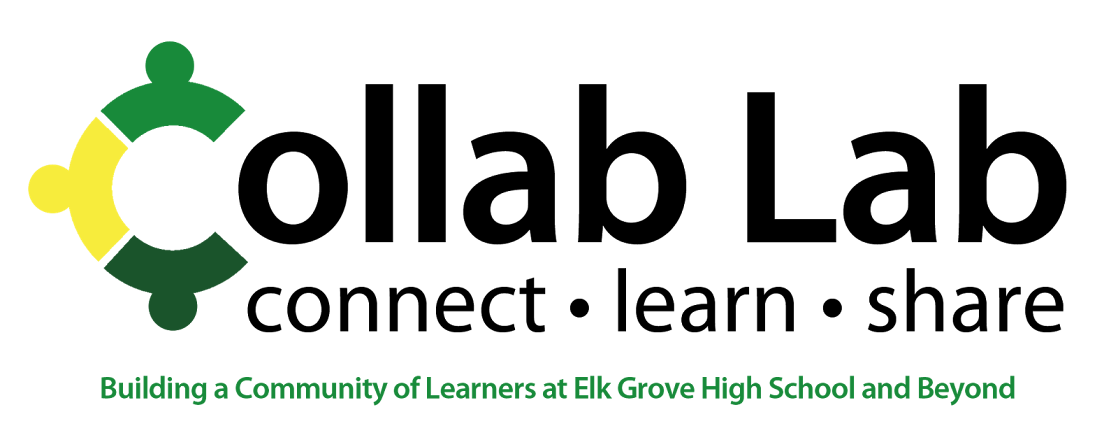Setting goals, and writing them down, can make a huge impact on success. According to Forbes, a study was conducted on the 1979 Harvard MBA Program regarding setting and writing down future goals. It was found that 3% had written down their goals and how they would achieve them, 13% set mental goals, and 84% did not establish any goals. The study followed up with the same group ten years later, and they found that "The 13% of the class who had goals, but did not write them down was earning twice the amount of the 84% who had no goals. The 3% who had written goals were earning, on average, ten times as much as the other 97% of the class combined!" Now, I know that monetary goals and education goals are not the same, but the precedent still holds true. Talking about your goals, putting together a reasonable plan of how to achieve these goals, and then writing all this down builds a foundation for future success.
In my classroom, I have found that taking some time out of the curriculum to set goals can make a huge difference. Here are some ways that I goal-set with my students:
1) Beginning of the Year Survey
First, I feel that in order to talk to a student about their future goals, I have to get to know them, learn what they want to accomplish, and build a trusting relationship. This is a brief survey, looking at all different aspects of a student's life. I have my students submit it electronically, so that I can quickly reference it at any time. Another way to get to know your students at the beginning of the year is by having them make an Educreations or ShowMe video, talking through different aspects of themselves. There are a multitude of ways to get this information, but no matter which you pick, the importance is the same - get to know your students to establish a positive relationship early on in the year.
2) Post-Quiz Reflection
Our curriculum is made up of quizzes on each standard, as well as a unit test covering 2-4 related standards. We use this Post-Quiz Reflection document for students to reflect on their work, following a quiz. Our department follows a standards-based learning model, so we allow students to retake any quiz. In order to do so, a student must fill out the rubric, using his or her quiz, and then complete the homework problem associated with the incorrect questions. This process helps me to reiterate the importance of mastering each skill, as all current skills in math will be needed in next year's math course.
3) Unit Test Self-Reflection & Goal Setting
Following a unit test, I like to mix up how I have my students think about their learning and achievement.
- Individual Conferences: We have an online gradebook, which both students and parents can view at any time to see a current summary of a student's grade. After a unit test, however, I like to print out a paper summary for students. I find that there is sometimes greater emphasis when they see their grade in this format rather than constantly checking via the Internet. On the grade printout, I have them write a couple sentences reflecting on their effort and achievement for the prior unit. Then, they are to set two realistic goals for the upcoming unit. I meet with each student to ensure that these goals are achievable and that they are aware of all resources available to them, such as my availability, Saturday School and tutoring in the library. Next time I do this, I will also have them take a screen shot of their goals for them to quickly reference at various times throughout the school year.
- Google Form: I love to use technology for students to self-reflect because it saves class time. This form was used once students already had access to their grades, however, I have also created a Google Form for students to complete following the exam to reflect on their test prior to seeing the grade. Either way, I have found these that students are very honest with their expected or known achievement based on their efforts throughout the unit.
4) Goal-Setting in Standardized Testing (EPAS Growth)
Throughout the year, we give our students two benchmark exams to observe their progress in terms of our state standardized testing. Our freshmen take the PLAN test, our sophomores take the iACT, and the juniors take the ACT. There are two goal-setting forms that I use with my students, one for my freshmen and one for my juniors. For most students, this is a motivational tool, to see that they are on track to achieve their EPAS goal (a growth of 3 from EXPLORER to PLAN, 1.5 from PLAN to iACT, and 3.5 from iACT to ACT).
This year our junior students also took the PARCC test, but due to the uncertainty of the test, we did not make adjustments to our benchmarking plan.
My biggest struggle with self-reflection and goal setting is time. I am still playing around with how much time I designate to this, as well as assessing the impact it has on my students. I love discussing this with others, so feel free to comment or stop down in the Collab Lab!

No comments:
Post a Comment
Note: Only a member of this blog may post a comment.